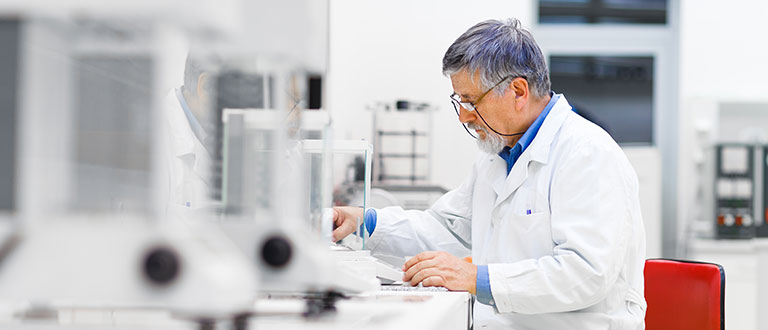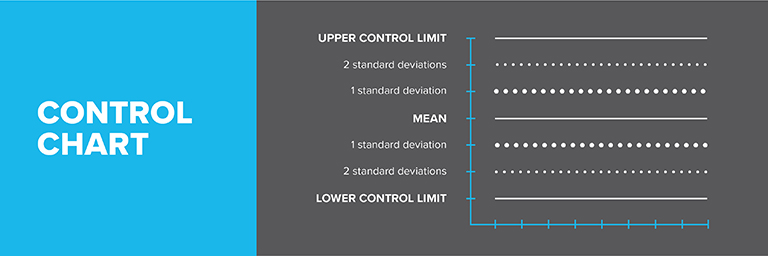How to Build a Quality Management Program for Your Lab

Analytical testing laboratories, like any type of complex system, exhibit an inherent variability that must be assessed and controlled in order to assure quality results. Historically, several methods have been used to deal with this variation, and improve the confidence in test results.
Years ago, Good Laboratory Practices (GLPs) were introduced to ensure the generation of high quality and reliable test data related to the safety of industrial chemical substances and preparations. Then came Total Quality Management and the global acceptance of ISO 9000 quality systems to control quality in a lab the same way it was designed to do so in a manufacturing environment. But neither of these options proved to be a perfect solution.
Enter, the laboratory quality management (LQM) program. An LQM is a complete system designed to manage the technical and non-technical factors that affect laboratory variability. An established LQM program can reduce analytical variation; it can make your laboratory operations more efficient and reduce processing and product costs; and, perhaps most importantly, it can increase your confidence in analytical results.
Wondering how you might build an LQM for your lab? Don't worry, here's everything you need to know.
Our Scientists
A team of more than 100 veteran chemists, biologists, microbiologists, food scientists, stability scientists and sensory scientists handles every aspect of our service. Learn more about Medallion Labs commitment to quality.
Learn More About Us6 Crucial Components of an LQM Program
Most Laboratory Quality Management systems are based onISO/IEC Standard 17025, which outlines the requirements for a complete LQM program. In addition, the Association of Official Analytical Chemists International (AOACI) published guidelines based on the ISO/IEC 17025 standard and the American Council of Independent Laboratories (ACIL) established a proposal for qualifications of laboratory certification.2Regardless of which source you prefer, all of these organizations agree that a good LQM program should contain the following components (all of which are detailed below):
- Quality manual
- Staff and training
- Methodology
- Reference materials (in-house or recognized)
- Record keeping
- Cost/benefit analysis
In addition, there are management and technical aspects to an LQM that are required by the ISO/IEC 17025 to govern the flow of information, the lab setup, and employee training.
Management Requirements
There are many aspects to the quality system designed to control the management of information. The ISO/IEC 17025 Standard requires the lab to have written policies regarding document organization, management review, document controls, contracts, purchasing, complaint handling, control of non-conforming test results, corrective action protocols, audits, and continual improvement.
Technical Requirements
In addition to the requirements placed on the management of information, there are technical requirements that address the technical aspects of the laboratory. The standard requires the lab to have written policies covering the selection and training of lab personnel, environmental conditions of the lab, test methods and validation, equipment and instrumentation, measurement traceability, method verification, sampling, as well as sample handling protocols.
1. Quality Manual
The management and technical policies mentioned above would all be contained in the Laboratory Quality Manual. This manual is a comprehensive collection of the laboratory’s quality system and accreditation bodies require each lab to have one of these on hand. In addition to simply having a manual available, version control can become an issue so control over the "final" version of the manual must be exercised so that obsolete versions are destroyed when they are replaced by newer ones.
2. Staff & Training
The basic philosophy of LQM regarding staff and training is that all personnel performing analytical procedures must be competent and trained by qualified trainers. The training level and methods used for each lab worker must be documented. It's also recommended the training be conducted by a single source for consistency and continuity.
3. Methodology
Methodology has several requirements in an LQM program. The methods must be written in a format that is consistent throughout the laboratory and they can be developed internally or taken from international and national standards and technical organizations. All methods must be sufficiently validated to ensure they meet acceptable levels of precision and accuracy. Importation of recognized methods must be verified to demonstrate proper performance by the laboratory. Finally, the written methods must be accessible to all users.
4. In-House Reference Materials
Production of quality results is essential to all analytical laboratories, particularly in the food industry, where consumers rely on accurate information from the nutrition label to make dietary choices. Assurance of the quality of these results is an ongoing effort that requires a comprehensive quality program utilizing the best tools available.
One tool that can be very effective is a program of in-house reference materials (IHRM). An IHRM is a test matrix with a predetermined amount of the analyte(s) of interest that is tested every time an analysis is performed. Analyzing a sample with a predetermined amount of analyte achieves three important goals:
- Determines if the method is in control for each run
- Increases understanding of the variation within an analytical method
- Builds confidence in the results
The laboratory must weigh the costs of the number of reruns for out-of-control situations versus the number of incorrect results being reported—most labs choose in favor of extra reruns. With improved method control, the number of reruns will decrease over time.
Choosing an IHRM
Each method should have an associated IHRM that is chosen using the following criteria: The quality control material is representative of the matrices typically submitted to the laboratory and contains levels of an analyte comparable to the levels normally being tested. A sufficient quantity of control material must be generated, typically enough to analyze one sample per run for one year. In addition, the IHRM must be stable during storage—or have known storage characteristics—since it is often used over a one-year period of time.
Establishing Control Limits
When an IHRM is selected and meets the criteria above, it is analyzed at least twenty times over several weeks. These analyses should include different days, different analysts, and different points within the analytical run. These data points are compiled and a standard deviation is calculated.

Control limits are then established using the following criteria:
- Upper Control Limit = mean + (3 x SD)
- Lower Control Limit = mean – (3 x SD)
Analyses are monitored on a control chart, which graphs IHRM results versus time. Results outside the control limits indicate that the method is not performing within specifications and all work must cease until the cause of the deviation is corrected. An out-of-control situation is defined as follows:
- Any point that falls outside the LCL or UCL
- 4 out of 5 consecutive points outside (+) 1SD or (–) 1SD
- 2 out of 3 consecutive points outside (+) 2SD or (–) 2SD
- 8 consecutive points all above or below the mean
- 8 consecutive points all increasing or decreasing
- non-random patterns observed
5. Record Keeping
There are several forms of documentation needed for an LQM program. Several logbooks including standard preparation logs, calibration logs, and analysis logs must be kept by the analyst and updated regularly. Training records must be documented as noted, and maintenance records of each piece of equipment should be kept in the laboratory.
In addition, Corrective Action Protocol (CAP) records should be used for each out-of-control situation on a control chart and each instrument issue. This will allow the analyst to identify root causes of problems and avoid recurrences.
Monitoring the program
Each individual analyst is responsible for monitoring the control charts on a daily basis. In addition, a team of analysts should oversee the monitoring of the IHRM program. The goal of this team is to continuously monitor and improve the quality of the analytical methods. An IHRM program is an excellent way to build confidence in your analytical testing procedures and, in turn, the quality of your product.
6. Considering Cost vs. Benefits
The costs are few in comparison to the benefits of a laboratory quality management program. The costs include the initial preparation fee for establishing and implementing a program, rerunning analyses, and changing the organizational mindset to a do-it-right-the-first-time attitude. The benefits of an LQM, on the other hand, are many. They include:
- Confidence in analysis
- Confidence in analytical results
- Increased customer satisfaction due to reduced product variation
- Fewer hold orders due to analytical results
- Improved recognition of instrument problems
- Reduced costs due to reduced waste
- Improved lab efficiency due to fewer rechecks and less time spent troubleshooting
The Way of the Future
Consumers across the country are becoming more and more aware of food nutrition labels. The government is also putting more time and money into monitoring the quality of the food—evidenced by frequent plant audits and the Global Food Safety Initiative—thus, the accuracy of analytical results is crucial. Every food company out there is trying to cut costs and improve quality, and one way to do so is to adopt an extensive LQM program.
A full LQM program is an essential part of analytical certification and, while we advocate for IHRM, other programs are available for use. The AACC and AOAC "check sample" programs, use of certified reference materials, and collaborative efforts with other laboratories are all excellent tools for quality improvement.
Let's Get to Work!
Submit your order online and ship your samples today. If you have questions, we are always here to help.
Medallion Labs+
A food testing program designed with mid-market and enterprise food and ingredient manufacturers in mind.
- Deneen Rief, John Szpylka, Ph.D., Jon DeVries, Ph.D. 1998 Assuring Quality Analytical Results Through the Use of In-House Reference Materials. Poster given at the AOAC Annual meeting September,1998.
- To view the ACIL/FLAWG proposal, visit: www.aoac.org/techprog/chem.htm